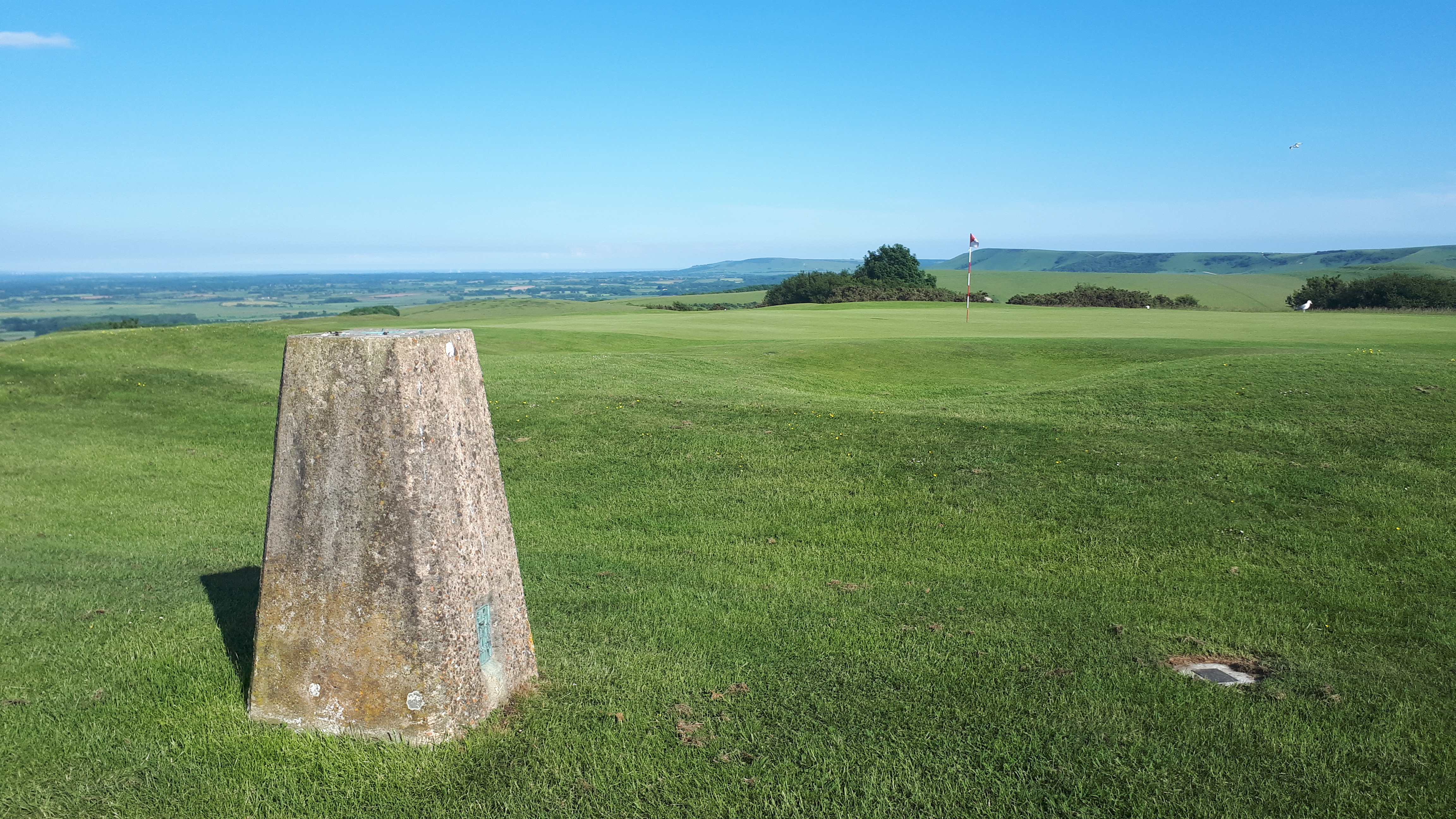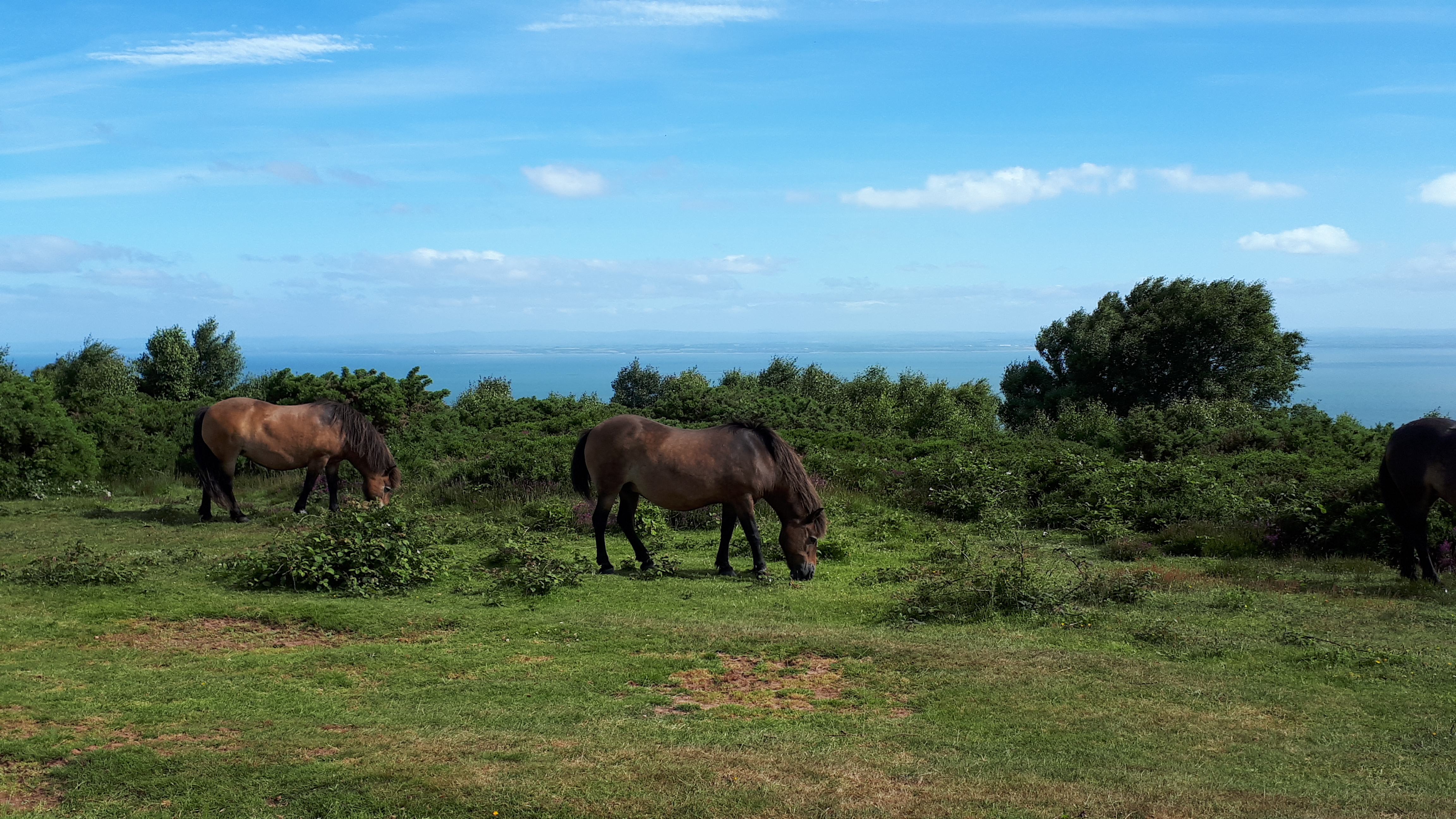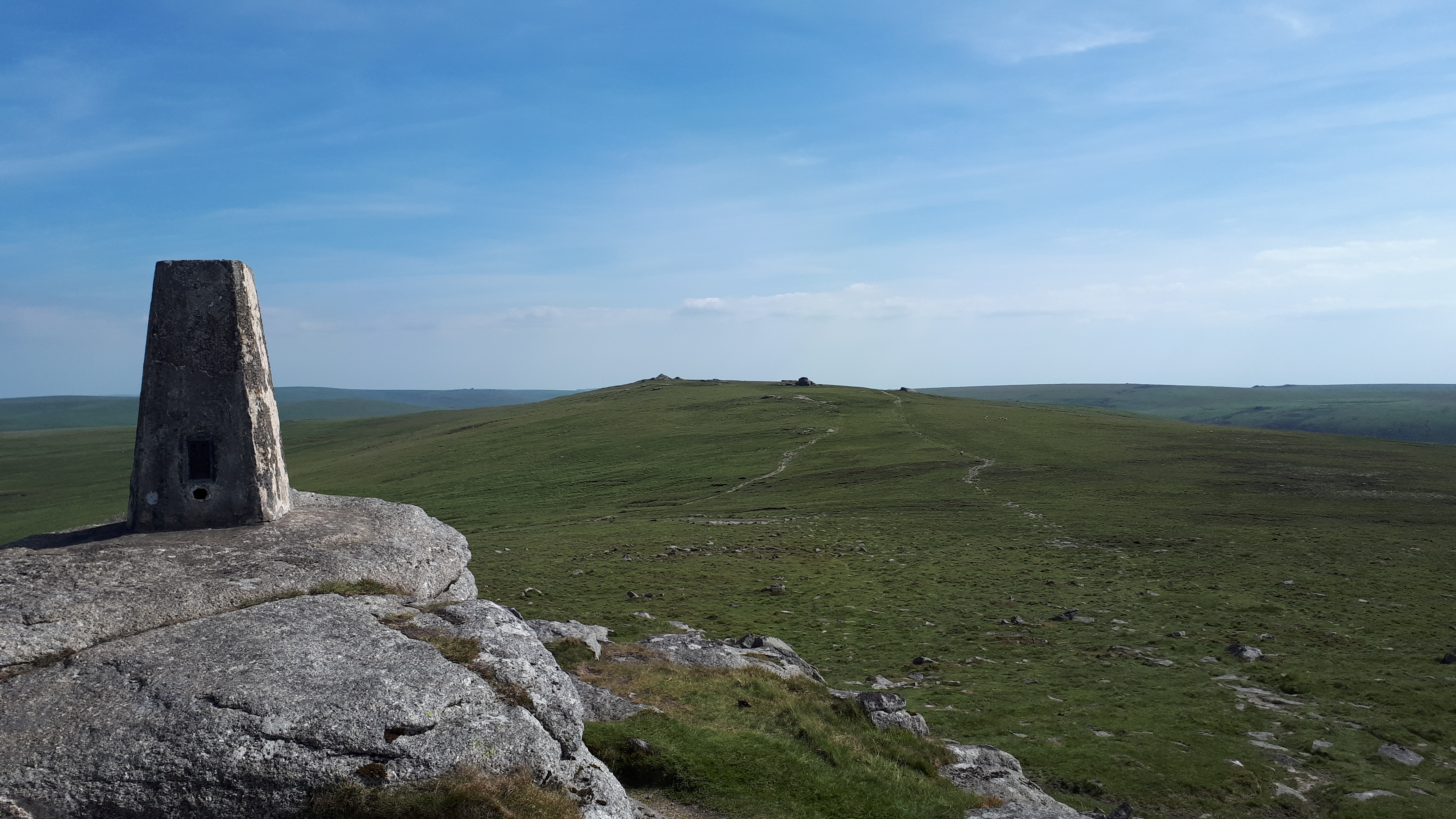After my Antipodean adventures, it was time to settle back into UK hillwalking. One of my longer term objectives is to climb 600 Marilyns. There are 1557 Marilyns in Great Britain. Of that number 175 are in England. So completing the English Marilyns seemed to be a reasonable objective as a starter.
Those familiar with the British hillwalking scene will know what a “Marilyn” is. They will also understand that “bagging” a Marilyn is not some sort of nefarious act.
A Marilyn is a peak in the British Isles that has a prominence of at least 150 metres. In other words, in order to reach any higher point from the top of your chosen peak, you have to drop at least 150 metres to reach that higher point. So in the British Isles, the highest Marilyn is Ben Nevis at 1344 metres. Its prominence is the same as its height because you would have to cross the sea to reach the nearest higher peak – Melderskin in Norway since you ask!
The lowest Marilyns are the high points of a couple of islands off the west coast of Scotland each at 154 metres in elevation. The highest of the English Marilyns is Scafell Pike at 978 metres.
And a final bit of trivia is that there are some well-known British hills that are not Marilyns, such as Cairngorm, Bowfell, Yes Tor and Helm Crag. But you can still get some good views from them so don’t let that put you off!
By the beginning of 2018 I had 39 English Marilyns left to climb. These ranged from a couple up near the Scottish border and one in the Lake District to a multitude in the south of England and in the Welsh borders.
Shropshire
The seven remaining Marilyns in the Welsh Borders were tackled during one snowy long weekend at the end of March. There was so much snow that we were actually stuck there for an extra day, hemmed in by snow drifts. The western half of Shropshire is surprisingly hilly. It is not considered particularly as a hillwalking part of the country. There are a couple of better known hills there such as Stiperstones and Long Mynd. But, apart from them, generally we had the hills to ourselves.




The south east
Moving on to June, I attended a 40th anniversary reunion of our University department that took place in Wimbledon. Whilst Julie and I had kept in touch with a few of our co-students, it was fun re-connecting with those who were able to attend and who I had not seen since collecting my degree. It was also an excuse for me to go down to Kent, Surrey and Sussex.
So over the next two days I visited the high point of Surrey, Leith Hill, with its tower:


Yes this non-descript street is a Marilyn!


And a summit in the middle of a golf course, amongst others.

It just goes to show how eclectic this pastime is. The mellow rolling hills of the south of England contrast starkly with the “proper” hills of the north of England. The southern hills are lower, more obviously touched by man, more accessible. But you only need to look carefully at the maps and you see barrows, standing stones, Roman roads and other remains, ancient field systems and Iron Age forts to get a feel for the history that surrounds you.
Although less challenging than much of the northern landscape, walking in these areas is not without interest.
The south west
Later the same month off the back of a business trip to Plymouth I had the opportunity to tackle some of the hills in Somerset, Devon and Cornwall far flung from home in the North. Here there is terrain on Dartmoor that almost matches some of the northern hills. But even Exmoor and Bodmin Moor have a more pastoral feel to them. Only on Dartmoor can you really get to places which feel a little remote with wide open heather clad spaces and bogs to match.
But it also gave me the opportunity to visit places I had not been to since my childhood – Minehead, Plymouth, St Michael’s Mount. It also highlighted the odd nature of Marilyn bagging – climbing through the scars of china clay mining, locating a summit in an 8m high hedge and standing on a summit looking at both the north and south coasts of Cornwall.









The north
In July I tackled the final three Marilyns in the north. First there was Illgill Head in the west of the Lake District which has stunning views down over Wastwater. I climbed it on a rather cloudy day, a rare thing in our summer of 2018.

Instead of the usual route up Illgill Head from Wasdale, I climbed it from Boot in Eskdale where there is a car park at the rail terminus of the Ravenglass to Eskdale narrow gauge railway. This way provides a tougher but more interesting circuit than the usual one, including a chance to explore some stone circles near Boat How.

A few days later I went up to the Scottish border where two isolated hills, Peel Fell and Sighty Crag lie. These, particularly Sighty Crag, are infrequently visited. Sighty Crag must be one of the physically hardest Marilyns to reach, at least in England. Once an initial forest road is left, there are no tracks and it is ankle twisting territory with knee high grass, heather and bilberry whilst also looking to avoid the inevitable bogginess. I took what seemed to be an age to cross the 2km or so to the summit trig with a couple of false summits on the way.
On Peel Fell you can follow the England/Scotland border and have fun stepping in and out of each country. If ever Scotland becomes an independent nation I wonder how this border would be monitored.
Spectacular this countryside is not. But it is an area where you can easily lose yourself and where the terrain can be harsh and unforgiving. With our dry summer I had it lucky. In normal conditions you can expect sodden legs and feet. Perhaps the best time to climb them would be after snow and a big freeze to harden it up.

The end game
That then left a set of eight in Berkshire, Hampshire, Dorset, Wiltshire and the Isle of Wight. That’s it about this crazy game. It takes you to places you would otherwise probably never visit. The exception is East Anglia – it is so low and flat that you will find no Marilyns there!
So I had never been to the Isle of Wight. On this occasion I had persuaded Julie and Jet to join me – not that Jet normally requires much encouragement…!
Another long weekend at the beginning of August saw us drive down to the Isle of Wight to catch the ferry from Lymington climbing Walbury Hill in Berkshire on the way. That same evening we climbed Tennyson Down. Tennyson Down is not a Marilyn but proves the rule that you can have spectacular views from hills that miss out on the 150m of prominence. We took a packed tea up there and marvelled at the seascape along the south coast of the island whilst enjoying the balmy weather. This hill is named after the poet, Alfred, Lord Tennyson, who lived nearby for much of his life.

The following day was a mad dash around the island to find and climb the two Marilyns that the island had to offer – St Boniface Down and Brighstone Down – together with some other hills. As was the case with Tennyson Down, the other hills trumped the Marilyns for interest. St Boniface Down has a couple of contenders for the highest point, one being in the middle of a building site when we visited and the other in a patch of gorse and bracken. The top of Brighstone Down was in the middle of some woodland without a view. Much more pleasant were Bembridge Down with its fort, monument and views and St Catherine’s Hill with the remains of a 14th century oratory.

Having enjoyed our short stay on the Isle of Wight, we left for Dorset and Wiltshire where the final objectives lay. The next day saw us climb Nine Barrow Down which overlooks Poole and Swanage. As suggested by its name it hosts a string of ancient burial chambers. Nearby is the massive Corfe Castle, a significant feat of medieval engineering.
Then it was off to Hardown Hill, an oasis of heather and gorse between Bridport and Lyme Regis. I remember going to Lyme Regis when I was 6 or 7 and running from the beach as a plague of biting insects descended. This time it was the gorse that attacked us!
Finally on that day we did Lewesdon Hill and Pilsdon Pen. Lewesdon Hill is the highest hill in Dorset. Pilsdon Pen was once thought to be. Pilsdon Pen is by far the more interesting of the two. Lewesdon Hill is covered in trees so there is only a restricted view there. Pilsdon Pen hosts a substantial Iron Age hill fort and has more extensive views. It is just a short climb from the car park at its foot. The path passes through the two rings of ditches and embankments that mark the ancient fortifications and you pop out right by the summit trig. It is worthwhile walking across the level expanse of the hill top to the other side of the fortifications just to appreciate the size of the community that would have been supported there.

And so that left two to do on the following day. We were now in Wiltshire. First up was Win Green, a drive up topped by a large copse. The summit is hidden in the trees rather than being at the nearby trig. With its isolation this hill gives expansive rather than spectacular views.
And so it was on to the final One – Long Knoll. This mighty 295m high hill sits in splendid isolation and has a wonderful 1.5km long ridge that rises above the valley of the River Wylye to the south and rolling wooded ground to the north. Having first navigated a short stretch of busy road a right of way starts up the east end of the ridge. After a short steep climb through some woodland, there is then a wonderful undulating promenade along that ridge until the summit trig is reached.
It was another wonderfully warm day. And there it was. The last of my English Marilyns climbed on 5th August 2018.


I celebrated with a small bottle of fizz. We spent 50 minutes on the top sunbathing and admiring the views. It had been a wonderful journey taking me from the bleak hills of Northumberland to the Wolds of Yorkshire, to the bucolic but busy Lake District, along the spine of England’s Pennines to the unexpectedly fine Welsh borders and along the foot of England.

We were going to drive all the way back to Yorkshire that afternoon. So it was time to go. But it was not the end of the journey. No, I am not going to try to do all of the Marilyns, though at the time of writing there are nine or so people who have done so. But a focus on other areas not previously visited or not visited for a long time might be in order. And perhaps a target of 600 Marilyns overall might be achievable.
I have around 800 Marilyn ascents with the repeats that I have done. So there will no doubt be some further re-visits as well – particularly on Yorkshire’s (if not England’s) finest little mountain, Ingleborough.
Great achievement !